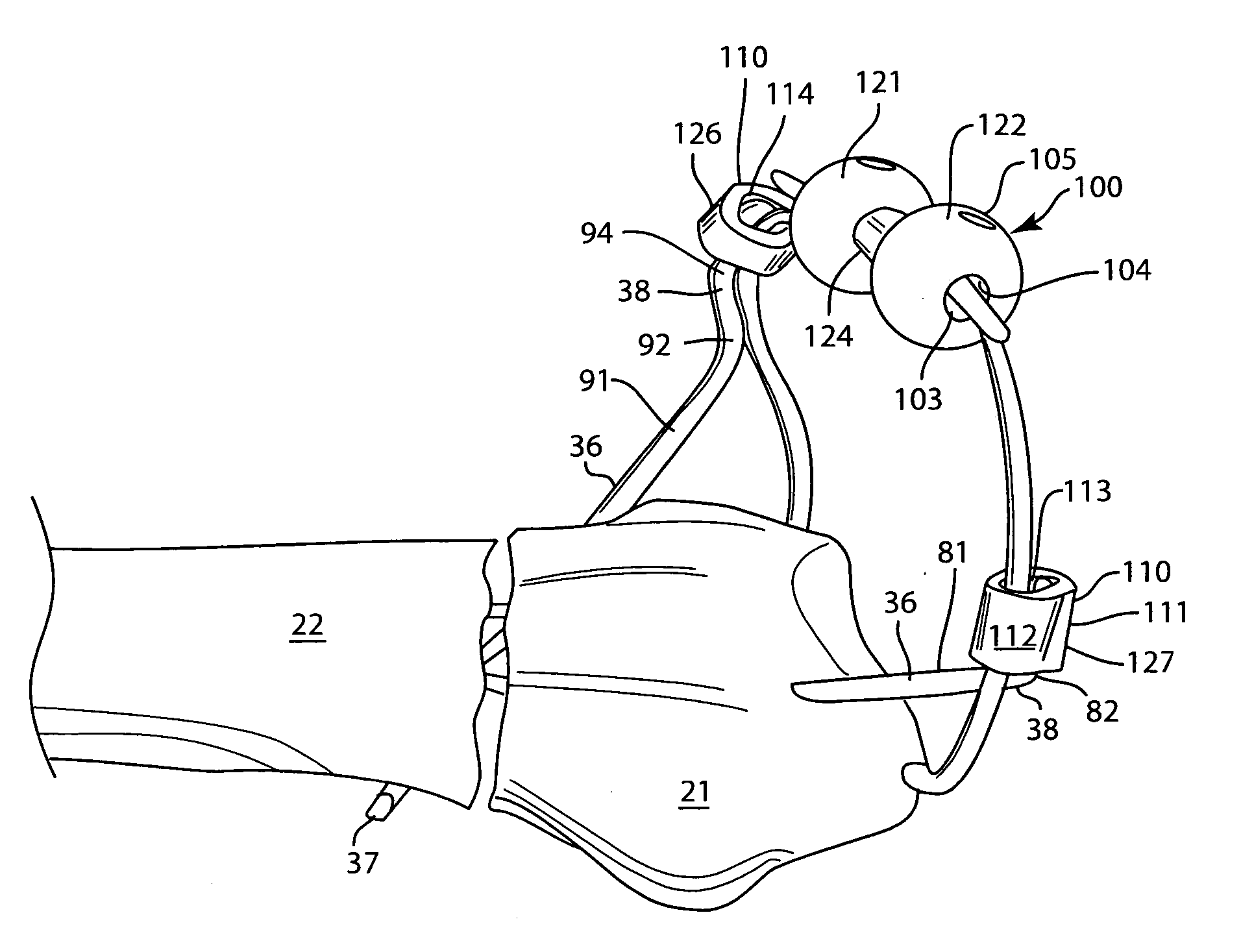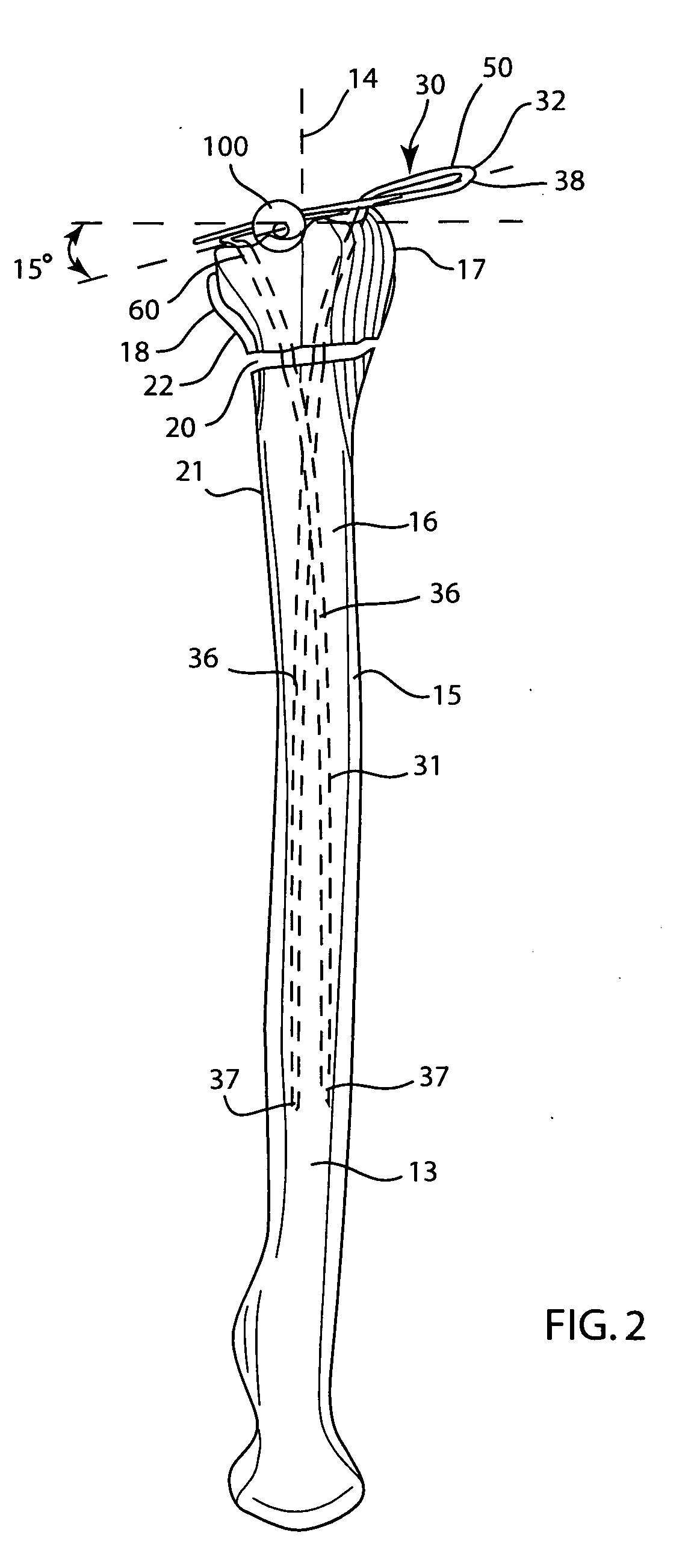Fixator for a fractured bone
a technology for fixing bones and fractures, applied in joint implants, medical science, surgery, etc., can solve the problems of wrist not being able to return to full mobility and strength, and the wrist may not be able to move and strength fully
- Summary
- Abstract
- Description
- Claims
- Application Information
AI Technical Summary
Benefits of technology
Problems solved by technology
Method used
Image
Examples
Embodiment Construction
[0027] While this invention may be embodied in many different forms, the drawings show and the specification describes in detail several preferred embodiments of the invention. It should be understood that the drawings and specification are to be considered exemplifications of the principles of the invention. They are not intended to limit the broad aspects of the invention to the embodiments illustrated.
[0028] The human arm has a forearm 3, a wrist joint 4 and a hand 5 as shown in FIG. 1. The arm is formed by bones and soft tissues, such as muscle, tendons, veins, arteries, nerves, all of which are surrounded by a layer of skin 6 as shown in FIGS. 1 and 3. The two bones in the forearm 3 are the ulna 8 and the radius 10. Each bone 8 and 10 extend longitudinally along the length of the forearm 3 from the elbow (not shown) to the wrist 4, and is generally in side-by-side relation relative to the other bone. The ulna 8 is located along the outside or pinky finger side of the forearm 3...
PUM
 Login to View More
Login to View More Abstract
Description
Claims
Application Information
 Login to View More
Login to View More - R&D
- Intellectual Property
- Life Sciences
- Materials
- Tech Scout
- Unparalleled Data Quality
- Higher Quality Content
- 60% Fewer Hallucinations
Browse by: Latest US Patents, China's latest patents, Technical Efficacy Thesaurus, Application Domain, Technology Topic, Popular Technical Reports.
© 2025 PatSnap. All rights reserved.Legal|Privacy policy|Modern Slavery Act Transparency Statement|Sitemap|About US| Contact US: help@patsnap.com



